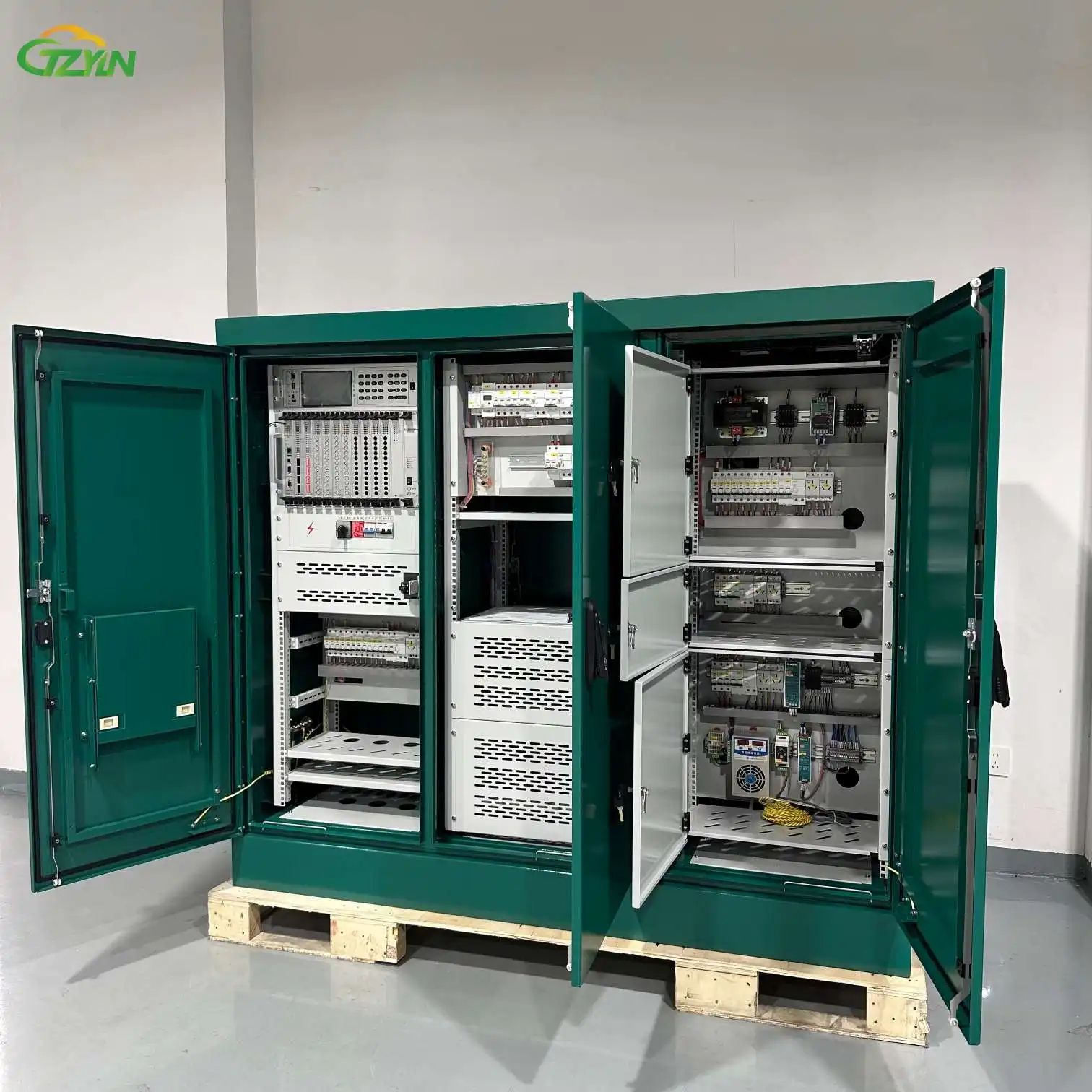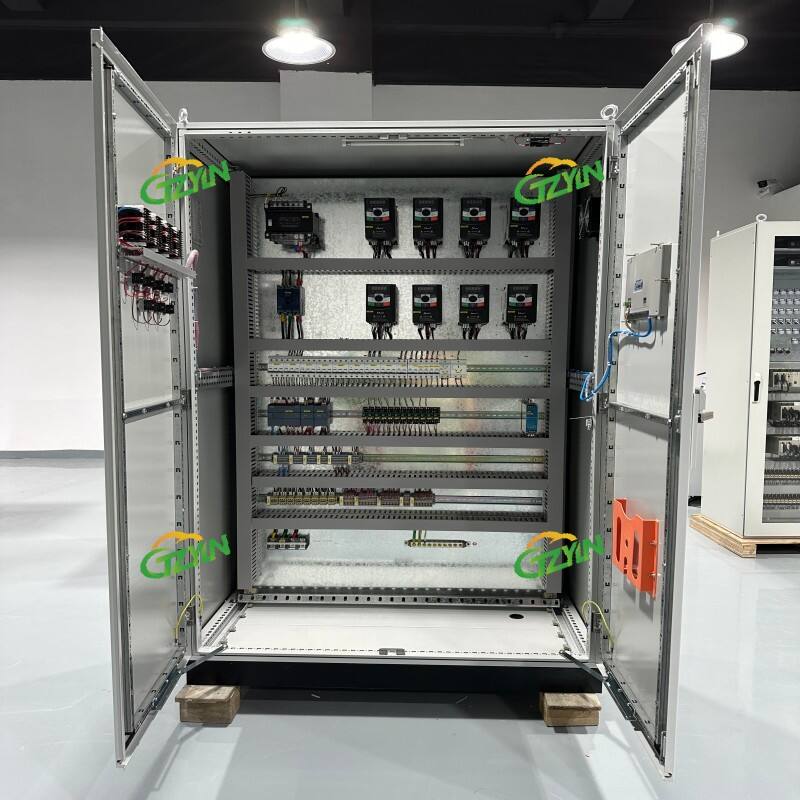Fan Control Cabinets as a Core Solution for Industrial Ventilation Efficiency
In industrial environments, the importance of maintaining stable and controlled airflow cannot be overstated. Whether it's a factory, a warehouse, or a processing plant, effective ventilation directly affects safety, energy consumption, and equipment performance. At the heart of many high-performance ventilation systems are fan control cabinets—a critical component designed to ensure efficient and automated airflow management.
The Role of Fan Control Cabinets in Ventilation Systems
Fan control cabinets are engineered systems that manage the operation of industrial fans, ensuring they function according to the specific ventilation demands of the environment. These cabinets are equipped with electrical and automation components such as variable frequency drives (VFDs), programmable logic controllers (PLCs), relays, and protective devices.
By using fan control cabinets, facilities gain precise control over fan speed and operating schedules. This level of control results in better airflow regulation, reduced energy consumption, and longer equipment life.
Key Components Inside Fan Control Cabinets
The effectiveness of fan control cabinets lies in their internal configuration. These components are designed to work together to provide intelligent and responsive fan operation:
- Variable Frequency Drives (VFDs): These regulate motor speed based on system requirements, which allows fans to adjust automatically rather than run at a constant speed.
- Programmable Logic Controllers (PLCs): They serve as the brain of the cabinet, executing automated control logic that responds to sensor input such as temperature, pressure, or humidity.
- Contactors and Overload Relays: These ensure the system operates safely, protecting the motors and circuits from damage due to faults.
- Control Interfaces: Some fan control cabinets include HMIs or remote access capabilities, allowing operators to monitor system performance and make real-time adjustments.
Each component adds a layer of control and protection, enhancing the overall efficiency and reliability of the ventilation system.
Benefits of Using Fan Control Cabinets
There are numerous operational and economic benefits to integrating fan control cabinets into industrial ventilation systems. Some of the most impactful advantages include:
Improved Energy Efficiency
By modulating fan speed with VFDs, fan control cabinets reduce unnecessary power usage during low-demand periods. This leads to significant energy savings, especially in large facilities where ventilation accounts for a major share of electricity consumption.
Enhanced Environmental Control
Fan control cabinets allow for precise adjustment of airflow based on environmental conditions. This ensures a stable indoor climate, essential in sectors like food processing, pharmaceuticals, and electronics manufacturing.

Lower Maintenance Costs
Soft starts and controlled fan operation reduce wear and tear on motors and mechanical components. As a result, maintenance cycles are extended, and the risk of system failure is minimized.
Compliance with Safety and Regulatory Standards
Proper airflow management helps facilities comply with occupational health and safety regulations. Fan control cabinets contribute by maintaining adequate ventilation and ensuring the safe expulsion of fumes or heat.
System Integration Capabilities
Many fan control cabinets can be integrated into broader building automation systems (BAS), offering centralized control over HVAC, lighting, and energy systems. This improves coordination and operational transparency.
Typical Industrial Applications
Fan control cabinets are found in a wide range of industries due to their adaptability and scalability. Common applications include:
- Manufacturing Facilities: To manage airflow and remove heat or dust from production areas.
- Logistics Centers and Warehouses: For climate control and fresh air circulation across large open spaces.
- Cleanrooms and Labs: Where airflow precision is crucial for product quality and contamination control.
- Agricultural Operations: To regulate temperature and humidity in livestock barns or greenhouses.
- Data Centers: For thermal management and cooling of sensitive electronic equipment.
In each of these applications, fan control cabinets support stable operating environments while promoting energy efficiency.
Design Considerations When Choosing Fan Control Cabinets
Selecting the right fan control cabinet involves more than just matching voltage and motor size. It requires a careful analysis of your system’s unique demands. Key factors to consider include:
- Load Requirements: Assessing the number and size of fans the cabinet needs to control.
- Environmental Conditions: Choosing appropriate enclosure types (e.g., dustproof, waterproof) for harsh or sensitive environments.
- Control Strategy: Whether the cabinet needs to support manual control, sensor-based automation, or integration with a central BAS.
- Expansion and Scalability: Planning for future growth or system upgrades.
Working with a vendor that offers customized solutions ensures your fan control cabinets align with your exact operational goals.
Why Choose Our Fan Control Cabinets?
Unlike generic solutions, our fan control cabinets are designed and assembled in-house, with full attention to the specific airflow, safety, and automation needs of our clients. Every unit is tested for durability, electrical safety, and control performance before it leaves our facility.
We offer cabinets with modular designs that are easy to install, expand, and maintain. Our engineering team provides comprehensive support, from system planning and cabinet configuration to post-installation service. This holistic approach ensures that our clients receive a solution that’s reliable, scalable, and optimized for long-term use.
Maintenance and Longevity
To maximize the life of fan control cabinets, regular inspection and preventive maintenance are recommended. This includes:
- Checking VFD settings and fan load response
- Inspecting wiring and terminal connections
- Cleaning the interior to prevent dust accumulation
- Verifying PLC function and sensor data input
When properly maintained, fan control cabinets can operate reliably for many years, reducing the total cost of ownership.
FAQ: Fan Control Cabinets
What is the main advantage of using fan control cabinets?
Fan control cabinets provide automated, energy-efficient management of industrial fans, helping improve airflow regulation and reduce energy costs.
Can fan control cabinets be used in multi-fan systems?
Yes. Many fan control cabinets are designed to manage multiple fans simultaneously, with individual or grouped control logic depending on system needs.
Are fan control cabinets compatible with smart building systems?
Most modern fan control cabinets support communication protocols like Modbus, BACnet, or Ethernet, enabling integration with building automation and monitoring platforms.
How long do fan control cabinets typically last?
With proper installation and routine maintenance, fan control cabinets can last 10–15 years or more, depending on usage and environmental conditions.
Do fan control cabinets require programming?
Basic fan control cabinets may not require programming beyond setup. However, advanced systems with PLCs or networked controls may require initial programming and adjustments based on application.


